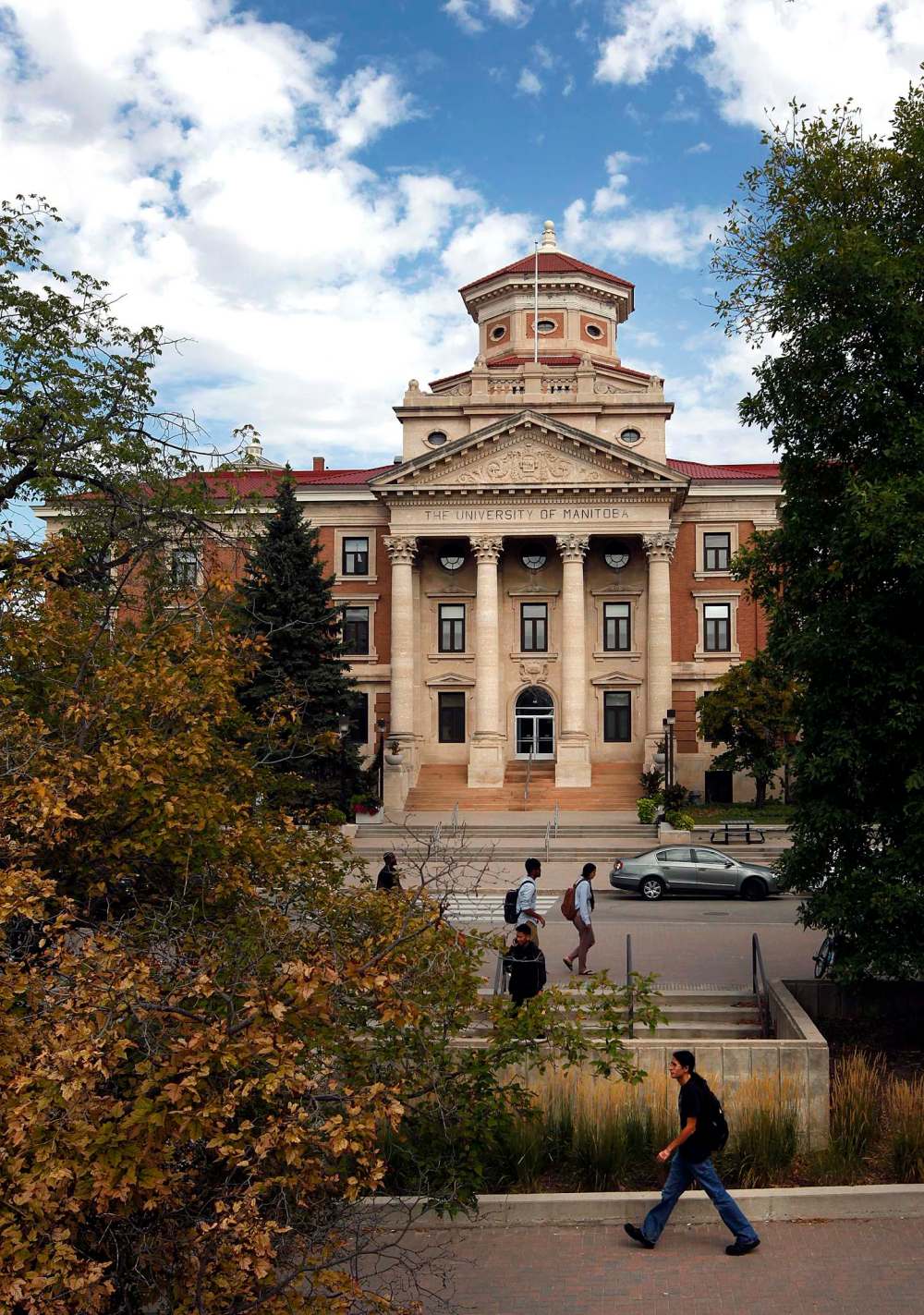U of M’s economic impact pegged at $2.4 billion
Advertisement
Read this article for free:
or
Already have an account? Log in here »
To continue reading, please subscribe:
Monthly Digital Subscription
$0 for the first 4 weeks*
- Enjoy unlimited reading on winnipegfreepress.com
- Read the E-Edition, our digital replica newspaper
- Access News Break, our award-winning app
- Play interactive puzzles
*No charge for 4 weeks then price increases to the regular rate of $19.00 plus GST every four weeks. Offer available to new and qualified returning subscribers only. Cancel any time.
Monthly Digital Subscription
$4.75/week*
- Enjoy unlimited reading on winnipegfreepress.com
- Read the E-Edition, our digital replica newspaper
- Access News Break, our award-winning app
- Play interactive puzzles
*Billed as $19 plus GST every four weeks. Cancel any time.
To continue reading, please subscribe:
Add Free Press access to your Brandon Sun subscription for only an additional
$1 for the first 4 weeks*
*Your next subscription payment will increase by $1.00 and you will be charged $16.99 plus GST for four weeks. After four weeks, your payment will increase to $23.99 plus GST every four weeks.
Read unlimited articles for free today:
or
Already have an account? Log in here »
Hey there, time traveller!
This article was published 03/12/2019 (2199 days ago), so information in it may no longer be current.
UNIVERSITY is expensive — but the University of Manitoba is giving back more than it’s taking.
The U of M has stirred $2.4 billion worth of economic activity in the province, a PricewaterhouseCoopers report that the university commissioned said. The $2.4 billion includes the university’s operating and research costs, its capital spending over the past five years and spending from visitors, students and the university’s spinoff companies.
The report, titled “The University of Manitoba: Economic impact analysis,” looked at statistics from the university from 2014 through 2019. It found that the province’s jobs, tax base, tourism and economic development directly benefited from the university.

Broken down, every dollar invested in the University of Manitoba generated $1.50 in economic activity.
The university has produced $922 million in labour force income, according to the report’s findings. Furthermore, the university has produced $400 million in taxes for the government.
The university can be thanked for $1.4 billion in gross domestic product spending in the province, according to the report.
An estimated 161,146 people visited Winnipeg because of the U of M in 2017 and 2018. They came for conferences, university events like convocations, high school recruitments and to see students and faculty. The visitors spent more than $77 million in town.
The university contributes in other ways, the report said. It’s a research-intensive school, and researchers have focused on problems affecting Manitoba, such as crop enhancement and flood mitigation strategies.
The U of M has at least partially helped create nine businesses. These spinoffs are engineering, health, scientific research and development and energy businesses.
University of Manitoba president David Barnard said he knew the institution was affecting the province in a big way because it’s a research-intensive school.
“The university has, I think, for a long time been providing these contributions,” Barnard said.
He said he was pleased with the clarity of the analysis.
PricewaterhouseCoopers looked at the university’s expenses from 2014 through 2019 when making the report. It also interviewed university staff and representatives of the school’s spinoff businesses, and looked at academic studies and economic studies of other universities.
The U of M is Manitoba’s largest university. There are more than 29,000 students. More than 66 per cent of university students in Manitoba went to the U of M during the 2016-17 school year. There were 9,412 staff at the university in March 2018.
gpiche@freepress.mb.ca

Gabby is a big fan of people, writing and learning. She graduated from Red River College’s Creative Communications program in the spring of 2020.
Our newsroom depends on a growing audience of readers to power our journalism. If you are not a paid reader, please consider becoming a subscriber.
Our newsroom depends on its audience of readers to power our journalism. Thank you for your support.






